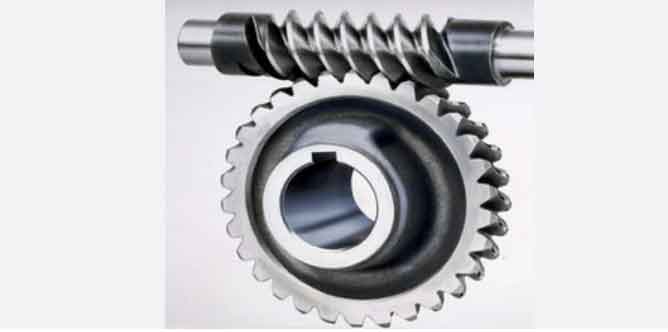
Worm gears are fascinating mechanical components with unique geometric characteristics and mechanics that contribute to their effective power transmission capabilities. Let’s explore the key aspects of worm gear design:
- Geometry: Worm gears consist of a cylindrical gear called the worm, which has helical teeth that wrap around the circumference. The mating gear, called the worm wheel or worm gear, has radial teeth that mesh with the helical teeth of the worm. The helix angle is a critical geometric parameter in worm gears, as it determines the rate of helix advancement along the worm’s circumference. The lead is the axial distance traveled by one complete turn of the worm.
- Helix Angle: The helix angle is the angle between the worm’s teeth and its axis. It directly affects the gear ratio and the efficiency of the worm gear system. A larger helix angle results in a higher gear ratio but may also lead to a reduction in efficiency due to increased sliding between the gear teeth.
- Lead Angle: The lead angle is the angle between the worm’s axis and a line parallel to the worm gear’s axis. It determines the linear speed at which the worm gear advances for each revolution of the worm. The lead angle influences the axial thrust and axial force distribution within the system.
- Gear Ratio: The gear ratio of a worm gear system is determined by the number of teeth on the worm wheel and the number of starts on the worm. The gear ratio is typically expressed as the number of teeth on the worm wheel divided by the number of starts on the worm. Worm gears offer high gear reduction ratios, making them suitable for applications requiring high torque and low speed.
- Self-Locking: One of the essential features of worm gears is their self-locking property. When the worm gear system is at rest, the friction between the helical teeth prevents the worm from turning the worm wheel. This self-locking characteristic is advantageous in applications where the load needs to be held securely in place without any additional braking mechanisms.
- Efficiency: Worm gear systems exhibit lower mechanical efficiency compared to other types of gear systems due to the sliding contact between the helical teeth. The efficiency is influenced by factors such as the helix angle, lead angle, materials used, lubrication, and operating conditions.
- Materials and Lubrication: Proper material selection and lubrication are crucial in worm gear design to reduce wear and improve efficiency. Common materials for worm gears include bronze, steel, and plastic. Lubrication is essential to minimize friction and wear between the gear teeth during operation.
- Mounting Orientation: The mounting orientation of worm gears can impact their performance. In horizontal mounting, gravity helps with lubrication and reduces wear, while in vertical mounting, additional considerations for lubrication and thrust load management are necessary.
The design of worm gears requires careful consideration of the helix angle, lead angle, gear ratio, materials, lubrication, and other factors to achieve optimal performance in specific applications. Properly designed and maintained worm gear systems offer efficient power transmission, smooth operation, and precise motion control in a wide range of industries.
